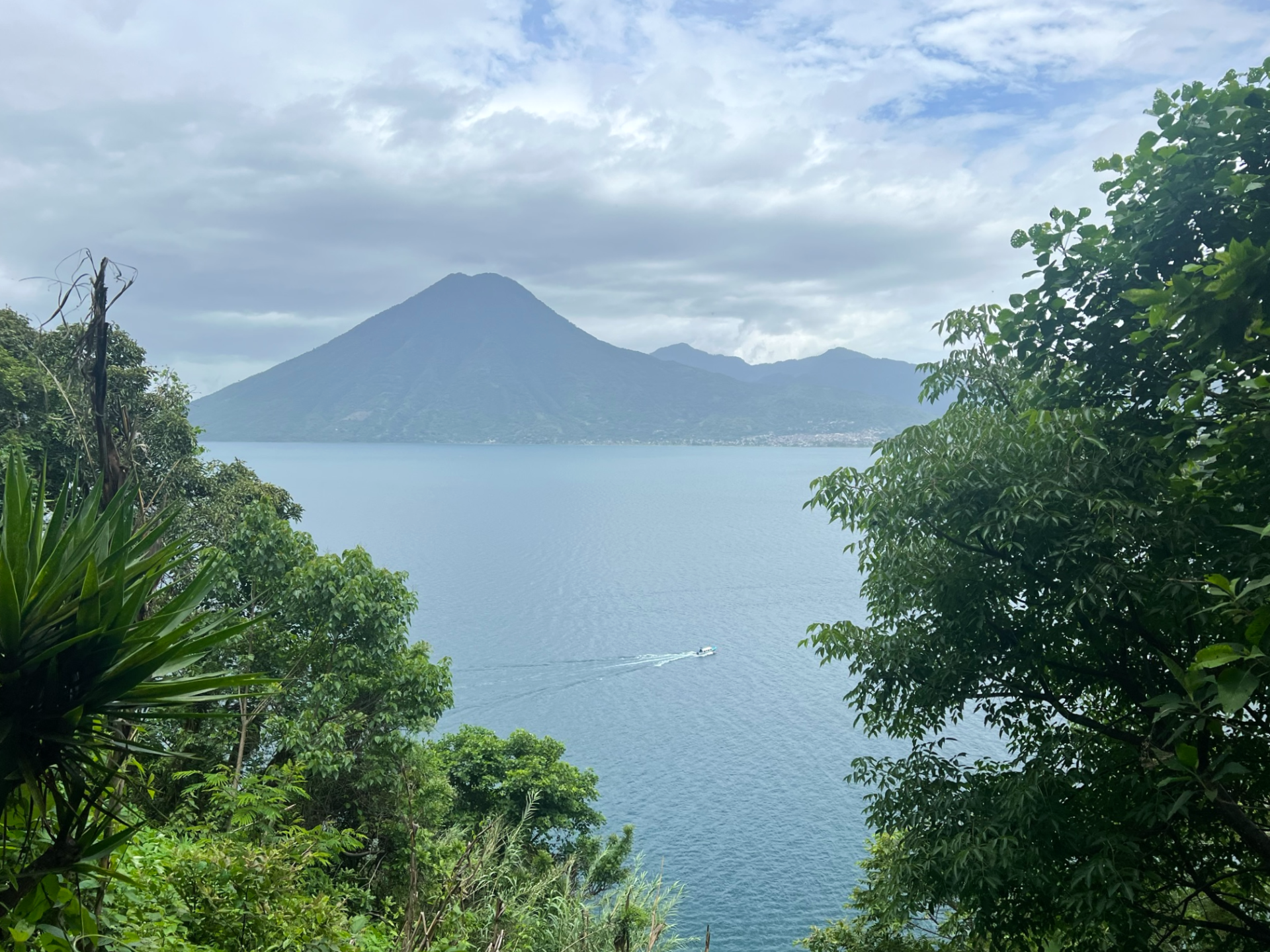
It was an eerie feeling: to be dropped off by a shuttle bus driver in the middle of a town we didn’t know the name of, not really functional in the local language, over two hours away from our luggage and belongings. We had WhatsApp and the number of a person we had never met. As the bus sped away, we felt a bit dazed standing on the street corner in this Guatemalan city on the banks of Lake Atitlan. It had all the makings of a plot-gone-wrong, but we had taken the leap and made the trek as Lake Atitlan has been heralded as one of the preeminent things to do in Guatemala.
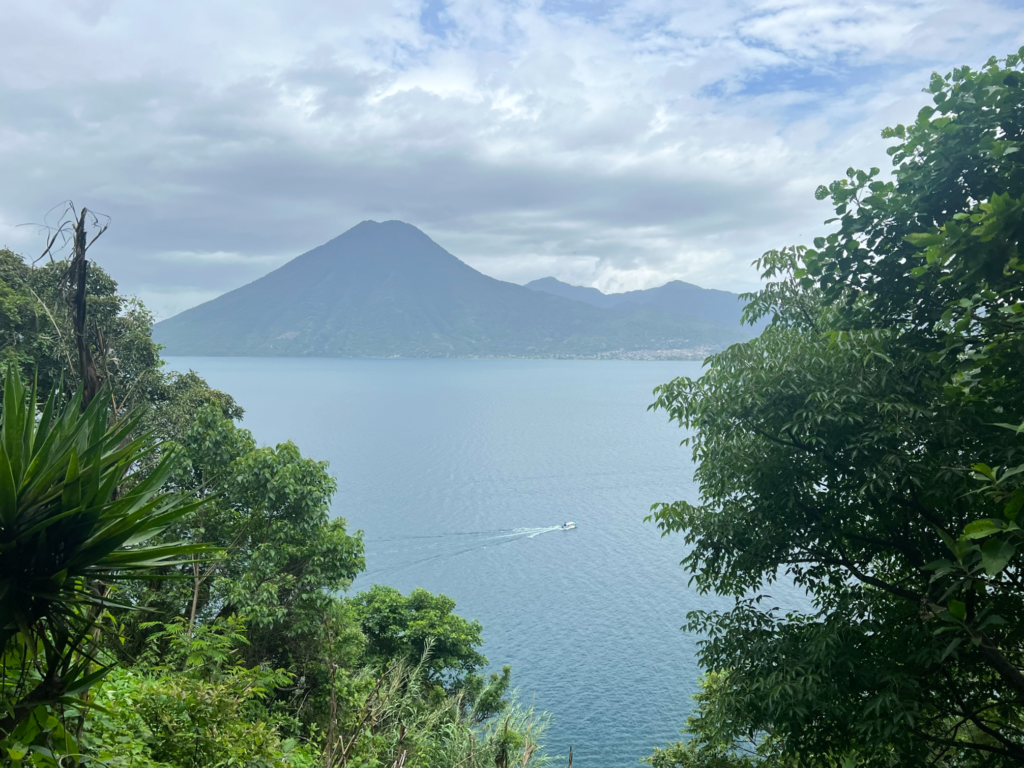
We had already hiked a volcano and eaten our way through Antigua Guatemala, so we were ready to see this supposedly-amazing place. Written up in 1,000 Places to See Before You Die and currently a yoga mecca, many tourists visit Lake Atitlan every year. Guatemala itself routinely sees over 2 million visitors a year, and the majority make their way to Lake Atitlan at some point. This area has a very large fulltime and part-time ex-pat population as well. But more on that later…
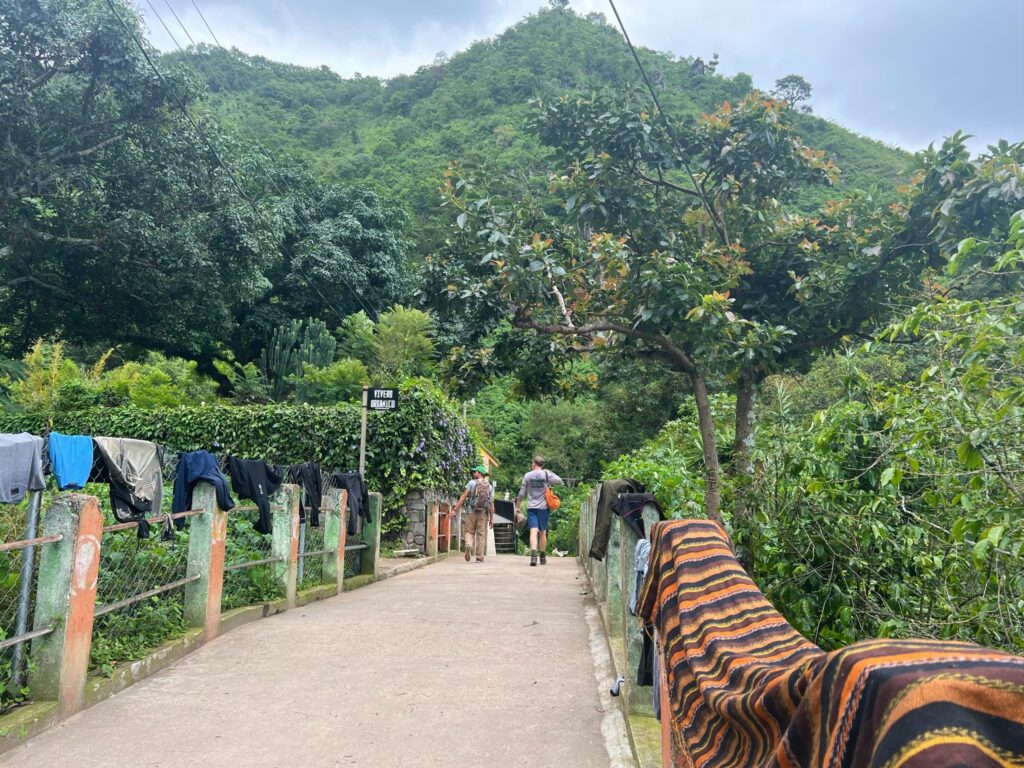
Lake Atitlan is a collapsed volcano, where water is captured in the crater (or caldera), creating the lake. It is heavily influenced by the Mayan villages and communities still on the lake but, these days, is the source of some controversy.
The Guatemalan government has worked hard to make Lake Atitlan a tourist destination. It is stunningly beautiful and a unique geographic feature. Yet in the name of encouraging visitors (and their revenue), they introduced a fish that anglers like to catch – which happened to be invasive, drastically altering the ecosystem. Additionally, the government is doing very little, if anything at all, to reduce pollution, dumping, and contamination of the lake. So the waters that draw thousands to see it have bloomed with toxic algae in the past few years.
It is a beautiful place and it is a changing place.
Tips for Visiting Lake Atitlán - and what to do
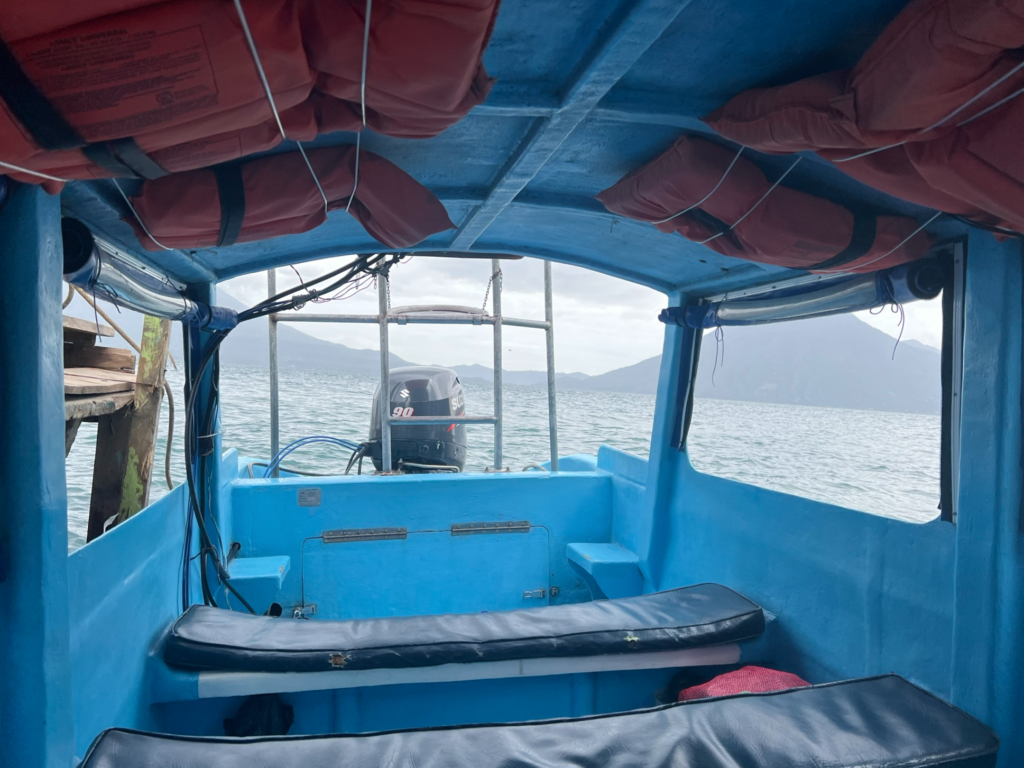
We didn’t rent a car in Guatemala (thank goodness! the driving can be stressful for those not used to the aggressive and, um, lively way Guatemalans drive). So we relied on outfitters and services. Yet we found the prices so affordable, it seemed like the best decision for us overall. Our kayaking outfitter arranged our shuttle transportation to Lake Atitlan for us.
There are a lot of places to stay in Lake Atitlan. As I mentioned, there are so many yoga hotels and hostels offering wellness retreats and yoga teacher trainings. But while going back and forth to Antigua in a day was tiring, we were really happy with our decision to be back to our hotel room in Antigua, with all of its wonderful restaurants and options. (We also really loved our hotel in Antigua.)
Getting AROUND Lake Atitlan is done by water taxi. Have cash, then just go get on the boat. The service is casual and regular. The rides are short.
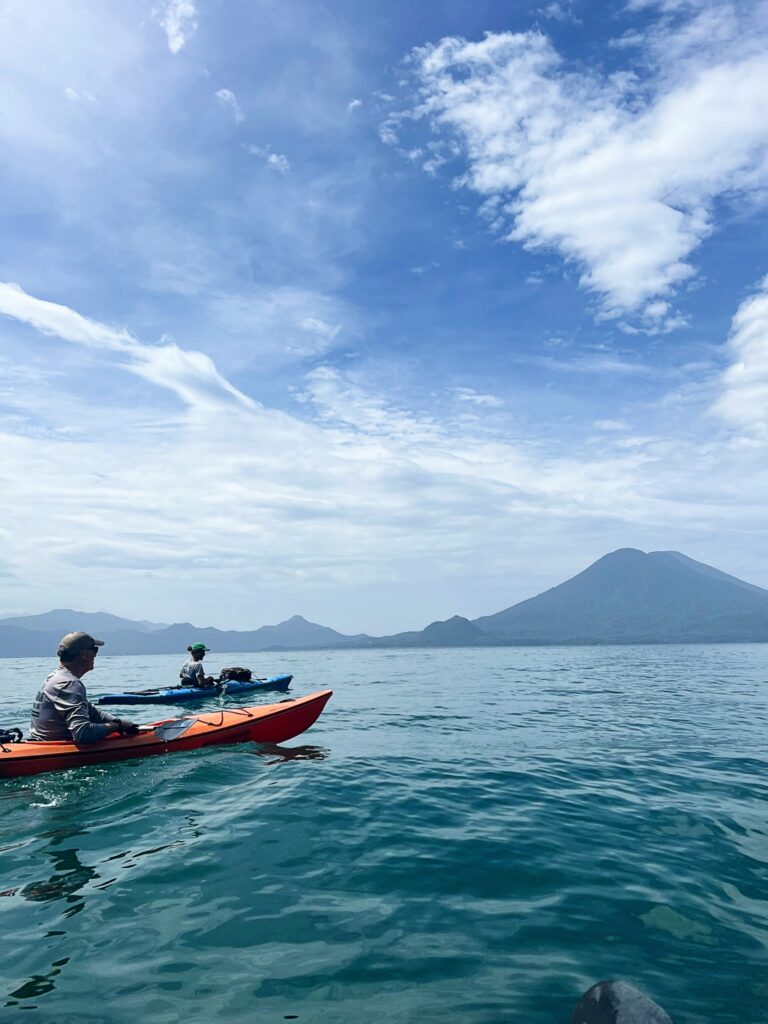
We chose to do an adventure through Kayak Guatemala. We spent the first part of the day kayaking close to the banks of the lake, seeing different villages and towns up close. Many of these communities cannot be accessed by any means other than water or foot.
It may be no surprise that, as a paddle enthusiast, I loved kayaking this lake. The water was such a promising, soothing shade of blue. Hearing the water lap against the boat, feeling the dormant volcano peaks piercing dramatically above us, it was, I think, the best way to see this area.
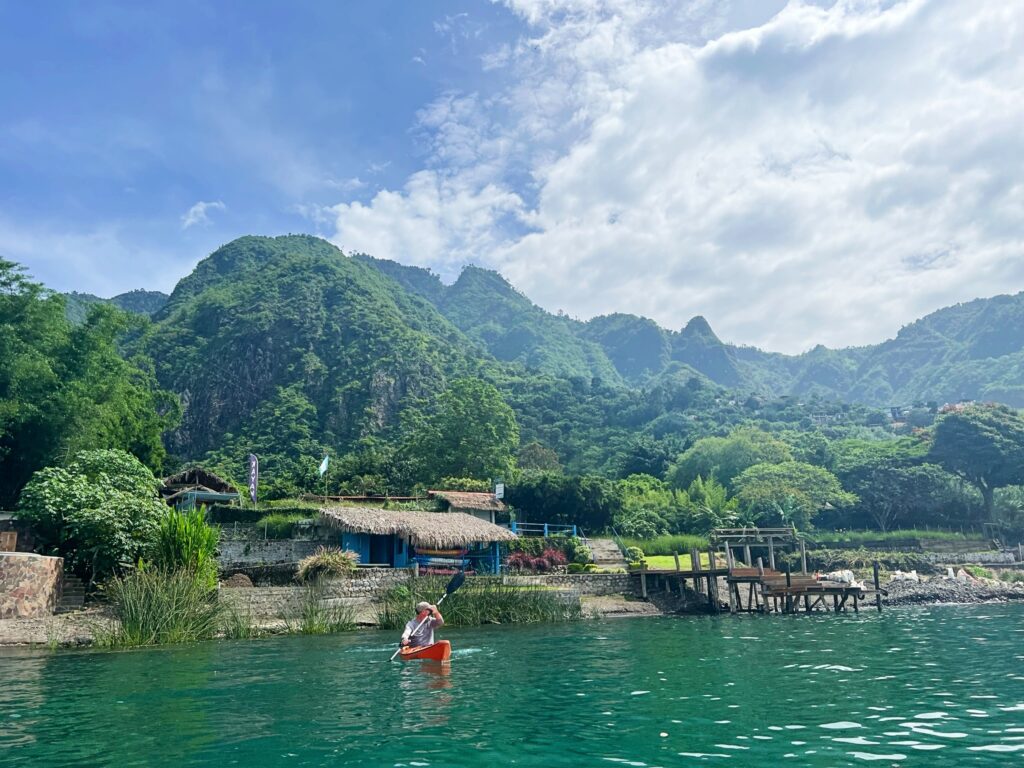
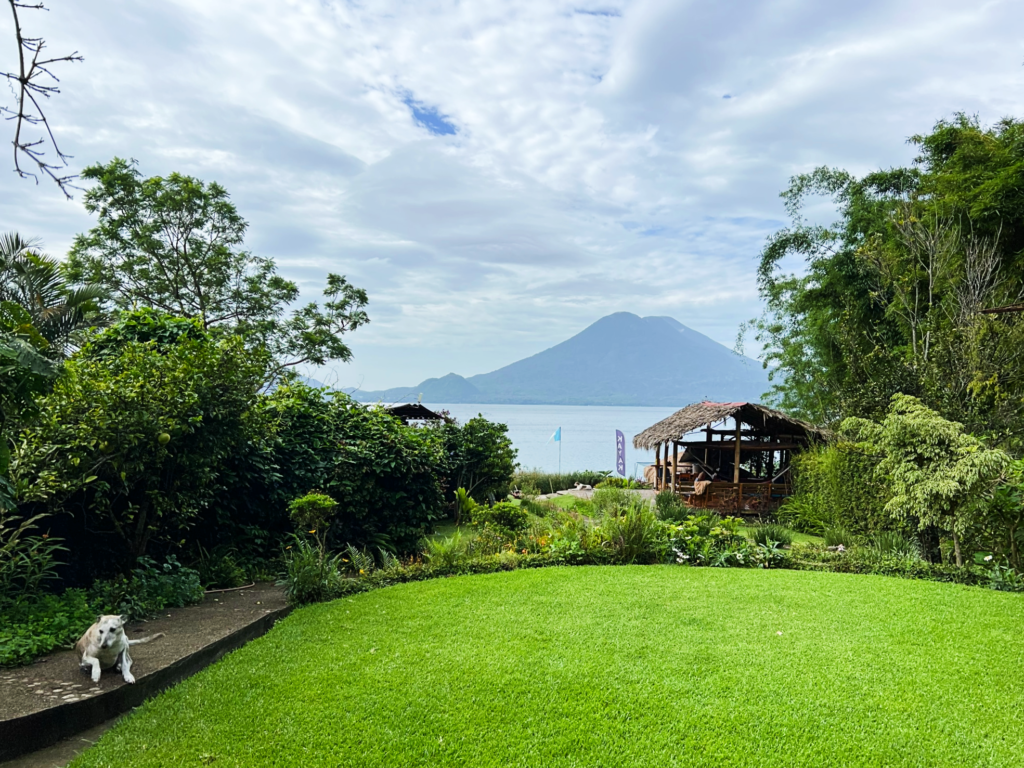
Our package adventure had us kayaking out and hiking back. We left the kayaks in San Marcos la Laguna and then our guide led us on a hike back to base. First, we started on streets winding through town. But, eventually, we found our way to a rugged trail. After five miles of hiking, the trail ended right where we had started our kayaking excursion.
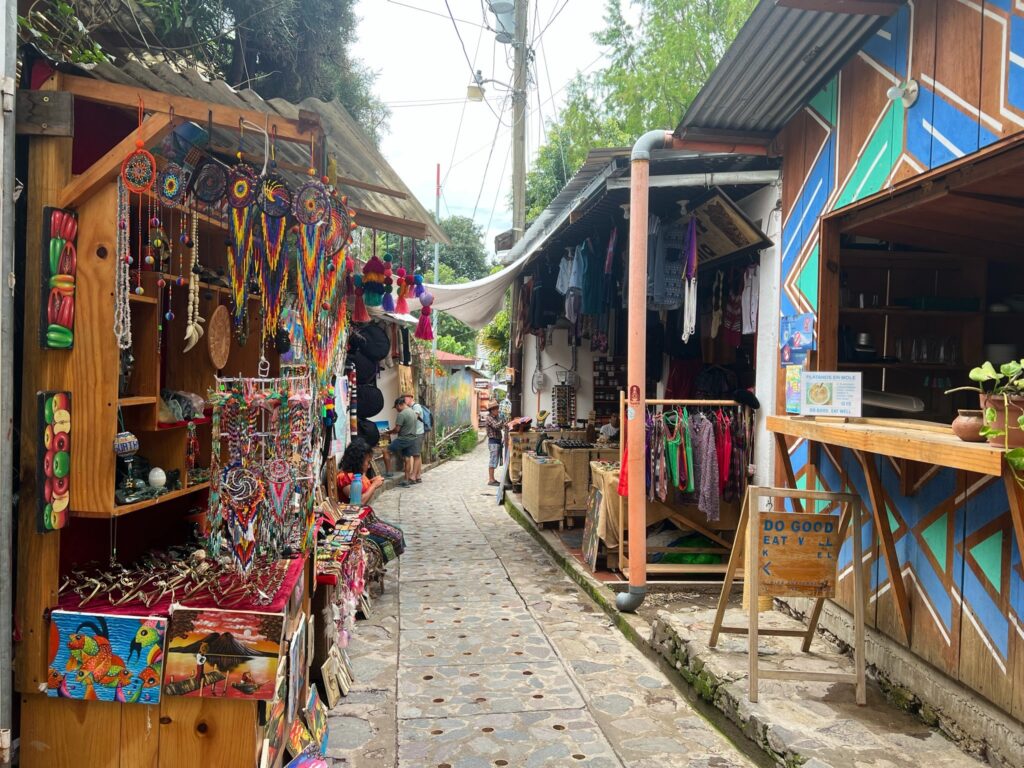
While the paddling was the more entertaining and relaxing part of the day, the hike was the most illuminating by far.
This goes against popular opinion, but I hated San Marcos la Laguna.
San Marcos represents what happens when foreigners enter a place, find their money makes them wealthy, and try to create an “authentic” experience while also satisfying their own cultural and comfort expectations. It felt like Guatemala meets Disney.
Having been through a lot of this region of Guatemala throughout our stay, Lake Atitlan was our last stop this trip. And San Marcos felt garish in some ways and certainly jarring.
Expats from all over settle in San Marcos every year. It sells itself as a “spiritual” and “hippie” village, but what we found were trinket shops run by locals trying desperately to sell their wares and coffee shops with San Francisco prices and a sea of non-locals.
We heard from our guide (who grew up at Lake Atitlan) and the Kayak Guatemala owner, an expat who has lived in Santa Cruz for decades and given thousands in donations to help local schools secure books for kids, that at one point in time San Marcos was, indeed, a hippie haven. Years ago, during time of global unrest and cultural reckonings (which, honestly, may not be that different from today), people flocked to this town that was off the grid, inaccessible by car, and inexpensive.
Over time, though, the place seems to have become less of a truly isolated place for a subculture to thrive and find a new way of living into more of a packaged wellness retreat for tourists, regardless of what Guatemala actually is or holds. Reiki parlors, meditation retreats, yoga studios, an ampitheatre…
In the meantime, we walked out of San Marcos la Laguna, led by our guide, and into the town next door where no one had a nailed down roof or floorboards. It was poverty directly adjacent to this thriving “hippie haven.”
Which, of course, begs the question: what do we owe to communities and local cultures when, with our econonmic Western wealth, we come in to create a version of a culture that suits us? Is that version even real?
Yes and no. We owe everything, yet we owe nothing.
Mr. Family Trip and I heard honestly from the people who live there, that we had the honor of talking to, of the complications and tensions that exist at Lake Atitlan today. I don’t know the answers to any of this complicated mess of humans living next to each other in chaos, but there was something about stepping from San Marcos into neighboring Tzununa and El Jaibalito that forces you to think.
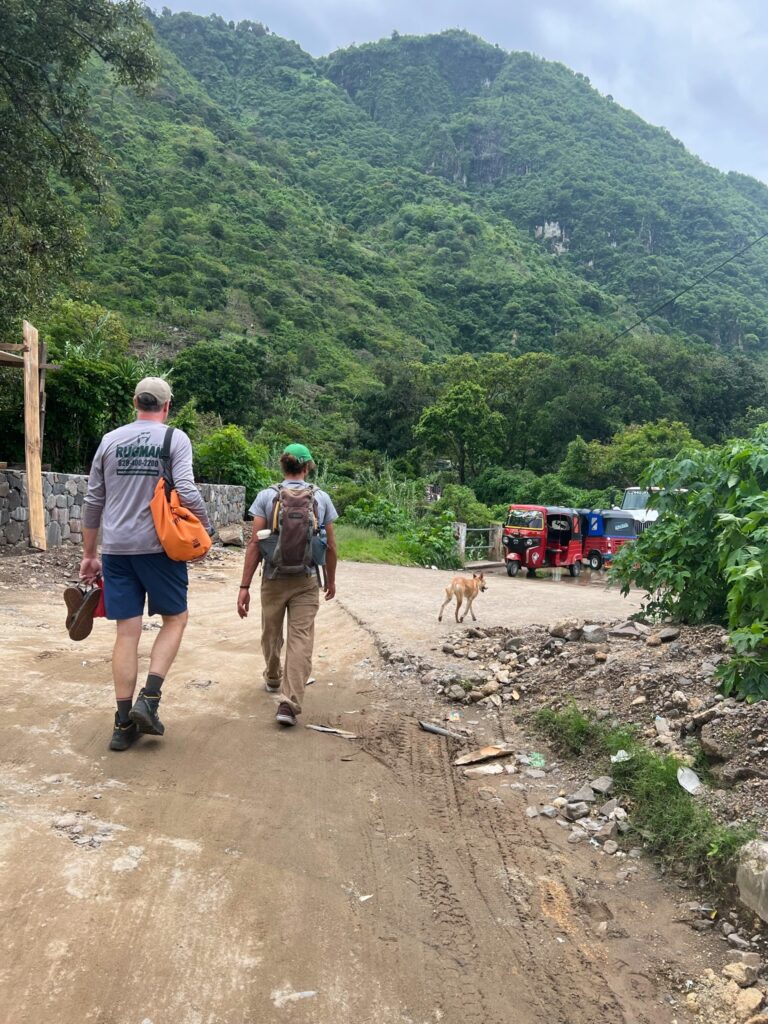
Our guide took us on the water taxi system back to Panajachel. Here, he left us, with reassurances that the shuttle bus system would, indeed, get us back to Antigua.
At this point, we were tired and hungry, and not terribly interested in waiting (particularly as we were waiting on a bus in Guatemala, where deadlines and schedules are loosely held – the bus could leave 15 minutes early or 30 minutes late). But we didn’t have any options, so we made the best of it.
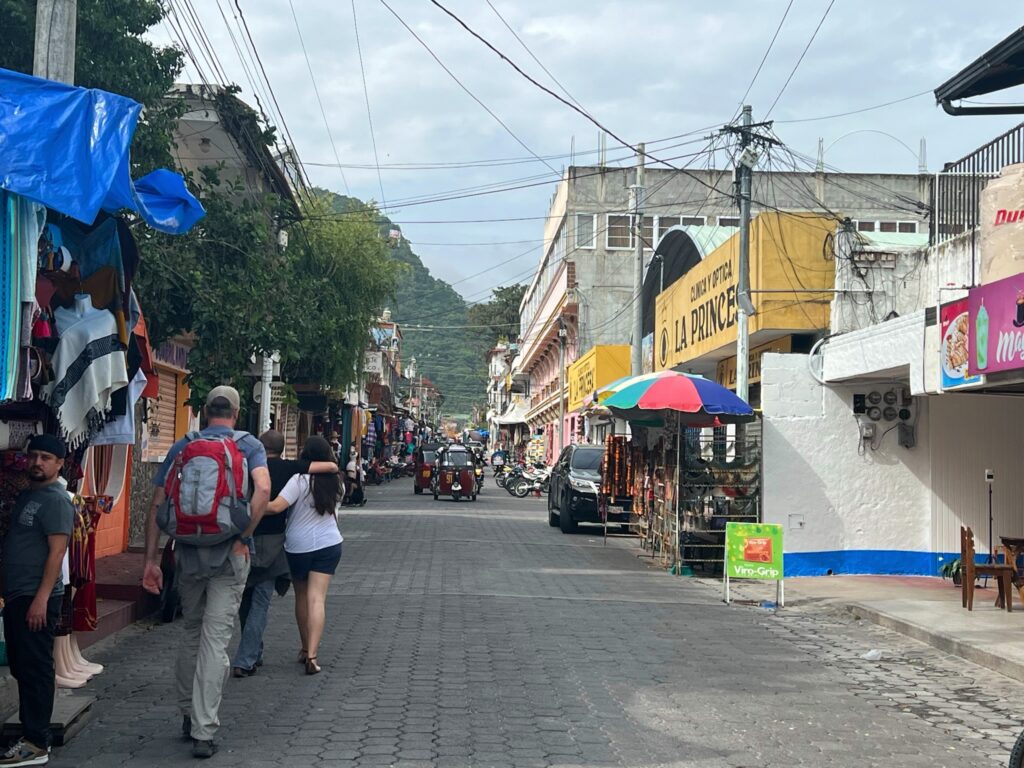
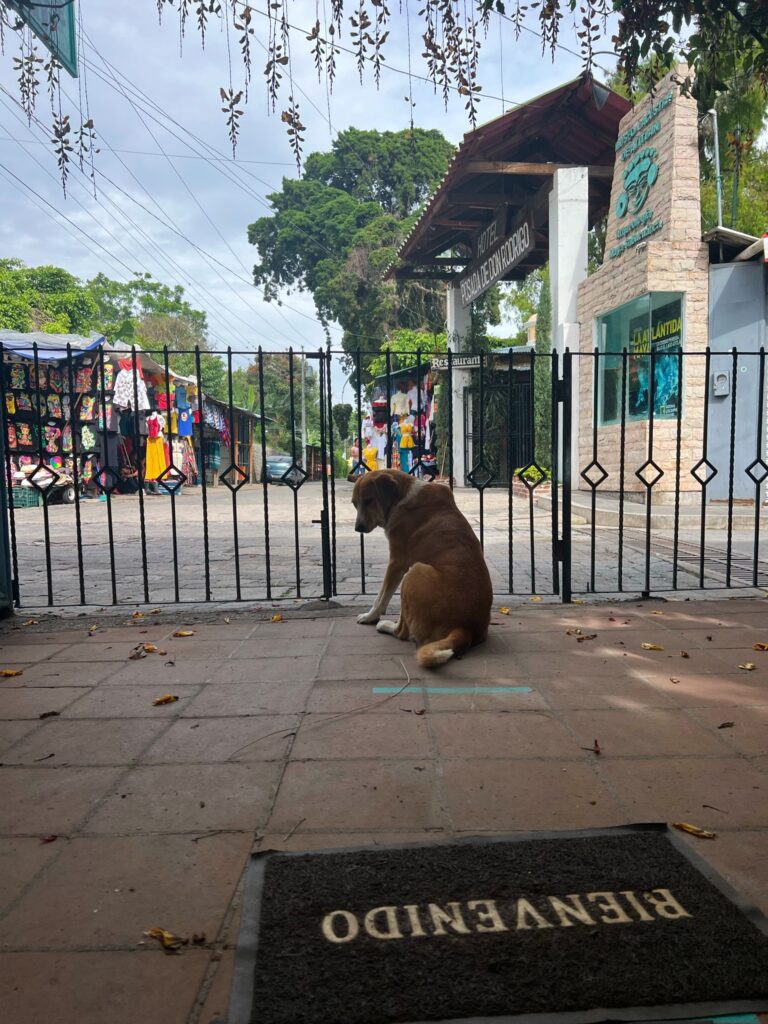
We walked around town, trying to determine what it was saying and wanted to be – it was a gateway, it was a quick stop, it was a tourist trap, it was a place where people lived and did laundry. It was all those things.
We ate, on our guide’s recommendation, at Deli Jazmin. Cash was required, which hindered our ability to dig in as we hadn’t prepared for that, but sitting outside in the shade was quite lovely.
We arrived early for our shuttle, which left late. As we barrelled through Guatemala’s mountains and chaotic traffic, we were tired and quiet. One of our vanmates pontificated the entire ride on the enlightenment she found while at Lake Atitlan on her yoga retreat. She told her captive audience about how we could be as enlightened as she now was if we stayed at X retreat and worked with Y yoga teacher.
She never once mentioned a conversation with someone who grew up on the banks of the Lake, was worried about the pollution, and took time to hike the entire perimeter of the Lake, camping under the stars and walking through all of its villages, over the course of days every year.
Lake Atitlan is a beautiful place and it is a changing place.
Like it?
Save it:
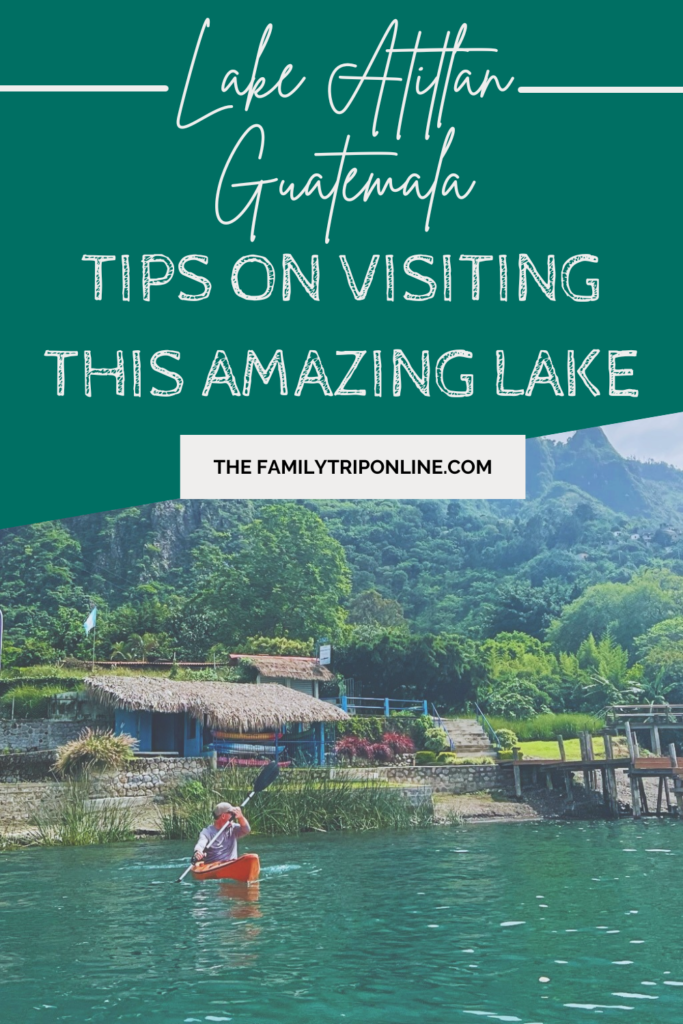
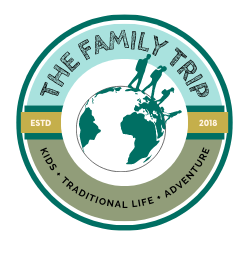
Thank you for writing this. I am a new travel blogger and recently visited Lake Atitlan. I felt the same way in San Marcos. It felt wrong and the way other travel bloggers lap this place up feels fake and the worst kind of tourism. Thank you for this!
Welcome to the travel blogger community! 🙂 And thank you so much for the support.